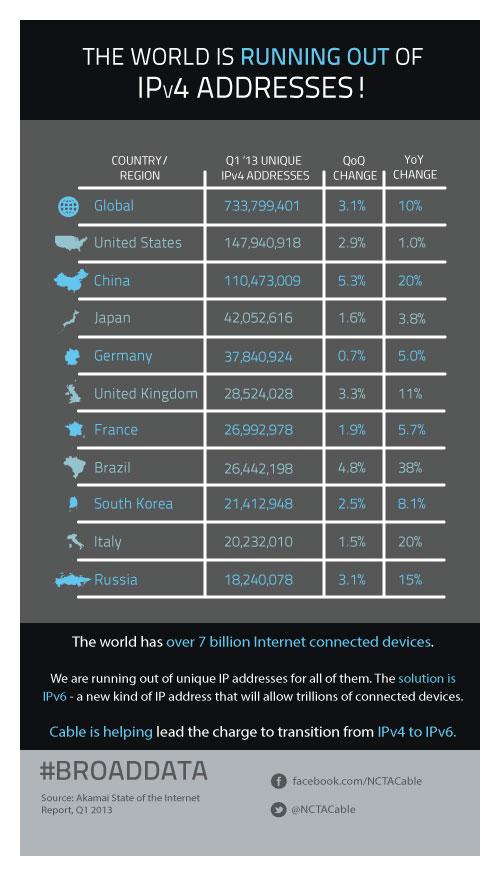This week’s #BroadData is a look at the end of a limited Internet and the beginning of an endless one. If you haven’t already heard of the end of IPv4, you’re sure to hear more in the future. Essentially, the number of IP addresses – the unique codes that identify individual Internet connected devices – are running out. Each IP address is 32-bits long, which allows for about 4 billion unique addresses. Some regions have already exhausted usable IP addresses and are under emergency IP measures. The solution is IPv6 – a new 128-bit IP address that allows for trillions and trillions of unique IP numbers. Problem solved, right?
Well, transitioning is easier said than done. Many websites and companies have made the switch and are ready for the new IP system, but for others it will take time and huge investments to make sure the new IP addresses work. The cable industry has been a leader in preparing its networks for the transition. But solving this problem and getting everyone working with IPv6 is going to come from efforts across all IP-dependent industries and organizations. To better conceptualize the need for the transition, see the chart below. It reveals the explosive growth in use of the old IPv4 standard and perfectly highlights the impending need for the switch. Just look at Brazil
